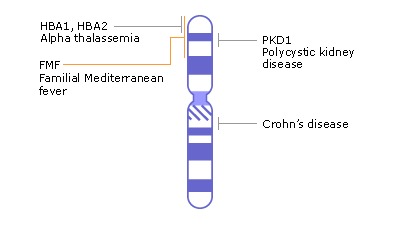Q Location On A Chromosome
 People with
People with Jan 25, 2017 q arm of a chromosome: The long arm of a chromosome. All human chromosomes have 2 arms - a short arm and a long arm - that are separated from each other only by the centromere, the point at which the chromosome is attached to the spindle during cell division. A centromere is not always located in the central area of a chromosome. A chromosome is comprised of a short arm region (p arm) and a long arm region (q arm) that are connected by a centromere region. Centromeres may be located near the mid-region of a chromosome or at a number of positions along the chromosome. The p region is represented in the shorter arm of the chromosome (p is for petit, French for small) while the q region is in the larger arm (chosen as next letter in alphabet after p). At either end of a chromosome is a telomere, a cap of DNA that protects the rest of the chromosome from damage.
This means that the gene is located on the q arm of chromosome 17, in region 2. Within region 2, the gene is located in band 1. Collectively, this may be called, “band two, one.” Within band 21, the gene resides in sub-band 31. Regarding the number 31, the 3 refers to a sub-band, and the number 1 refers to a sub-band within sub-band 3 (210).
 4q
4q  are missing
are missing 
Q Location On A Chromosome B
Q Location On A Chromosome Gene

- BMP3 - skeletal abnormalities and
short stature - SEC31A - distinctive craniofacial features
- PKD2 - kidney abnormalities
- GRID2, NEUROG2- neurological problems such as
seizures ,hypotonia , and delayed motor development (i.e. sitting up, walking, etc) - ANK2, HAND2- heart defects and/or arrhythmias
- FGF2 - limb (arms and legs) abnormalities
Researchers are working to learn more about the other genes on 4q that may contribute to the features seen in people with a chromosome 4q deletion.